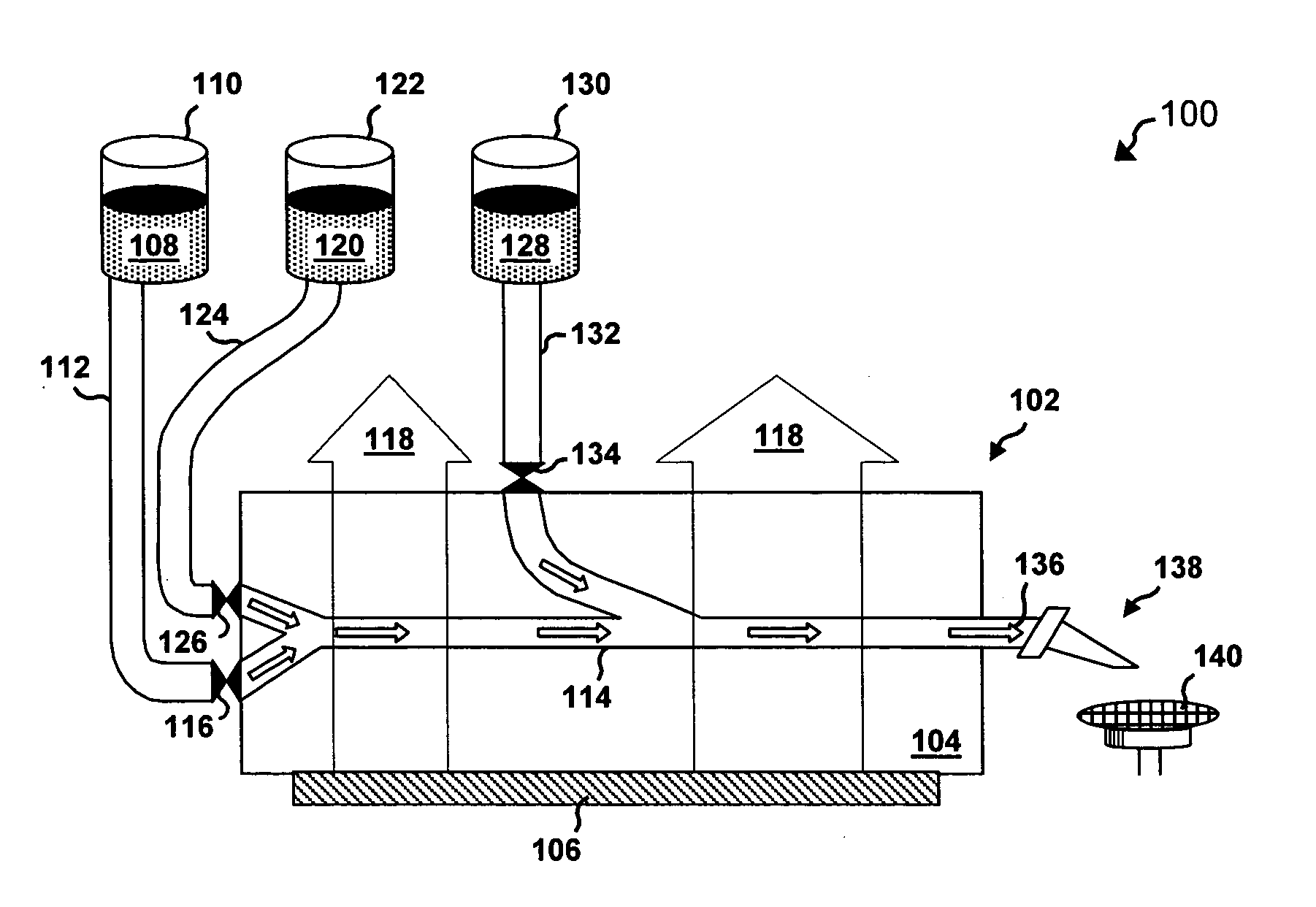Versatile system for conditioning slurry in CMP process
a technology of slurry conditioning and cmp, which is applied in the direction of cleaning using liquids, other chemical processes, lapping machines, etc., can solve the problems of copper being difficult to etch in the majority of the semiconductor process flow, affecting the efficiency of the slurry conditioning process, and affecting the quality of the slurry, etc., to achieve optimal slurry composition, reduce or eliminate slurry nonconformities, and optimize the effect of slurry mixing or conditioning
- Summary
- Abstract
- Description
- Claims
- Application Information
AI Technical Summary
Benefits of technology
Problems solved by technology
Method used
Image
Examples
Embodiment Construction
[0025] While the making and using of various embodiments of the present invention are discussed in detail below, it should be appreciated that the present invention provides many applicable inventive concepts, which can be embodied in a wide variety of specific contexts. The present invention is hereafter illustratively described in conjunction with the mixing and conditioning of polishing slurries and slurry components, for use in chemical mechanical polishing systems. The specific embodiments discussed herein are, however, merely demonstrative of specific ways to make and use the invention and do not limit the scope of the invention.
[0026] The present invention provides a versatile system, comprising a number of apparatus and methods, for point-of-use mixing or conditioning of multi-component slurries used in CMP. The system of the present invention may also be utilized to remix or recondition premixed slurries that have been stored for some time.
[0027] Comprehending certain com...
PUM
| Property | Measurement | Unit |
|---|---|---|
| time | aaaaa | aaaaa |
| energy | aaaaa | aaaaa |
| energy transmission | aaaaa | aaaaa |
Abstract
Description
Claims
Application Information
 Login to View More
Login to View More - R&D
- Intellectual Property
- Life Sciences
- Materials
- Tech Scout
- Unparalleled Data Quality
- Higher Quality Content
- 60% Fewer Hallucinations
Browse by: Latest US Patents, China's latest patents, Technical Efficacy Thesaurus, Application Domain, Technology Topic, Popular Technical Reports.
© 2025 PatSnap. All rights reserved.Legal|Privacy policy|Modern Slavery Act Transparency Statement|Sitemap|About US| Contact US: help@patsnap.com



